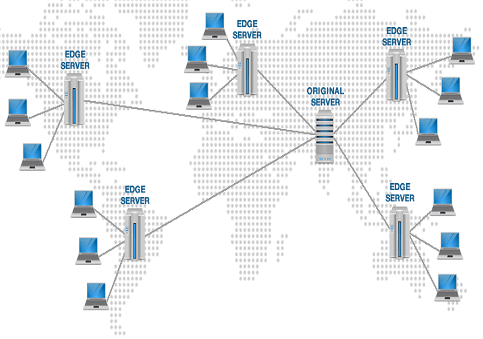A Content Delivery Network (CDN) is a system of geographically distributed servers that accelerates internet content delivery speeds.
Websites are hosted on servers. Servers are located in specific physical locations. If a user is in a location that is far from the server, they will experience load times that are longer than that of a user that is near the server. CDNs help to remedy this geographic speed inconsistency.
The CDN consists of 2 components: the origin server and the cache server(s). The origin server is, as the name suggests, the original server onto which the website was deployed. The cache servers, or edge servers, are servers around the world on which the original server’s content is duplicated.
So how does a CDN work? When a user makes a request to a website that is hosted on a server across the world, the user will receive that website’s pages from the closest cache server instead of having to wait for the long trip to the origin server.

CDNs are most effective in speeding the delivery of content from high traffic websites with global reach. For example, YouTube has its own CDN which makes it fast for everyone all over the world. Netflix uses an algorithm to push its most viewed shows across its CDN; that’s why more popular shows load faster on the platform.